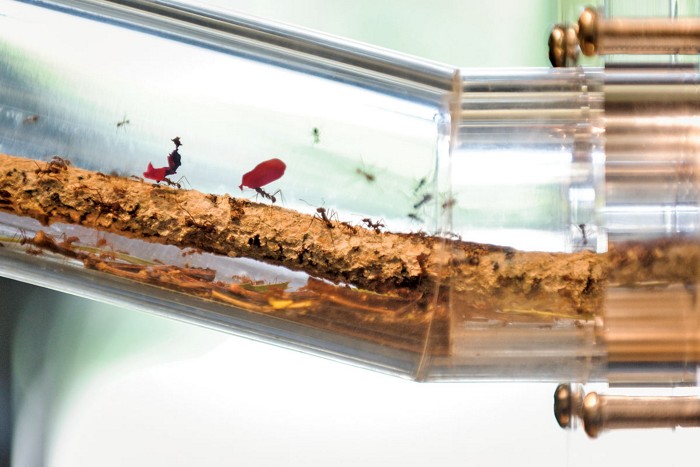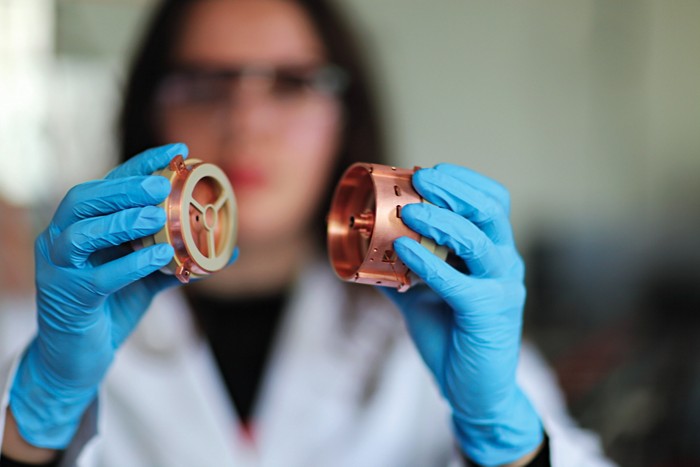Advertisement
Grab your lab coat. Let's get started
Welcome!
Welcome!
Create an account below to get 6 C&EN articles per month, receive newsletters and more - all free.
It seems this is your first time logging in online. Please enter the following information to continue.
As an ACS member you automatically get access to this site. All we need is few more details to create your reading experience.
Not you? Sign in with a different account.
Not you? Sign in with a different account.
ERROR 1
ERROR 1
ERROR 2
ERROR 2
ERROR 2
ERROR 2
ERROR 2
Password and Confirm password must match.
If you have an ACS member number, please enter it here so we can link this account to your membership. (optional)
ERROR 2
ACS values your privacy. By submitting your information, you are gaining access to C&EN and subscribing to our weekly newsletter. We use the information you provide to make your reading experience better, and we will never sell your data to third party members.
Mass Spectrometry
Identifying Material Evidence From Crime Scene Carpets
Forensic Science: Technique could help pinpoint fiber and dye makeup
by Sarah Everts
November 9, 2012

Forensic scientists may have a new tool to analyze suspicious fibers from crime scenes. The mass spectrometry method identifies dyes on nylon, a common carpet material (Anal. Chem., DOI: 10.1021/ac3025569).
The technique could provide backup for existing forensic fiber analysis techniques, allowing investigators to compare fibers from crime scenes with those associated with suspects. This new method also consumes a very small amount of the evidence, says David Hinks, a textile chemist at North Carolina State University, who developed the method with chemist Chuanzhen Zhou and others.
“Sometimes you get very little evidence from a crime scene. We want to minimize destruction of fiber evidence, especially when it is trace evidence,” Zhou says.
With funding from the National Institute of Justice, the team developed the method, which involves first cleaning residues off the fiber’s surface using a beam of ionized C60 fullerenes. Then the researchers use time-of-flight secondary ion mass spectrometry (TOF-SIMS) to analyze the chemical fingerprint of the dye, fiber, and any trace chemicals on the fiber’s surface.
Most forensic labs currently employ polarized light microscopy to identify fibers. Some labs then extract the dye from the fiber and analyze it by thin-layer chromatography, Hinks says.
By analyzing fiber and dye at the same time with the new technique, researchers can also identify trace contaminants in the material from its industrial production process. Identifying these compounds could give investigators an idea of which company produced a particular piece of material, which would then improve the accuracy of comparisons of fibers found at a crime scene to ones from a suspect, he says.
“I’d like to see this applied to a real forensic case,” comments University of Manchester mass spectrometry expert John Vickerman. He agrees that TOF-SIMS could be useful for forensic scientists. “They’ve shown what might be possible, but it is not yet a proof of principle for all cases,” he adds.
Textile conservation scientist Mehdi Moini at the Smithsonian Museum Conservation Institute sees potential for the new technique in cultural heritage research, where scientists also want to minimize destruction of samples.
“Many forensic and conservation scientists shy away from using these ‘destructive techniques’ because they consume a small amount of the specimen,” he says. However, this work, he adds, “clearly demonstrates that the amount of accurate information obtained from these techniques justifies their minimally destructive nature.”
The North Carolina State team is now extending the method to polyester and cotton.




Join the conversation
Contact the reporter
Submit a Letter to the Editor for publication
Engage with us on Twitter